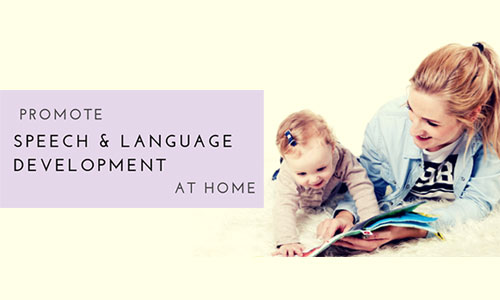You are a parent of a 2 year old baby or above and you are having a hard time teaching your kid speech and language skills! But don’t worry! There are many easy techniques which would help your child learn speech and language skills in an enjoyable manner. So follow these few tips and watch your kid use words well and gradually to form whole sentences!
The most common techniques used by mothers are parallel talk and self-talk. It is the most effective method and is recommended by professional speech language pathology in Kolkata, as it promotes good speech and language development skills.
Parallel talk refers to that technique in which the parent describes what the child is doing or seeing. In other words, the parent acts as a broadcaster – he/she describes the child’s activities without expecting a response or asking any questions. For example, if the baby is playing with a toy car, you can say, “My baby is playing with his favourite yellow car. Now you are turning the key and look how fast your car is going!”
Self-talk is another strategy where a parent describes what he or she is doing – without expecting a response from the child. For example, if you are writing the letter ‘W’, you say, “I start here and go down here, and again I go up, down and up again.”
The idea behind these techniques is that the child will learn by associating several things – and above all – by listening! Apart from this, a strong relationship between the parent and the child can develop – as you are actually making your kid feel that you are paying attention to him/her.
Birth to 2 Years
At this stage, using ‘motherese’ language while speaking to your child is really effective. Now what is ‘motherese’ language? It is the simplified form of language used, especially by mothers, while speaking with babies or toddlers – generally within 1 year of age. It is characterised by repetition of sounds, and using a very simplified sentence structure – like using two-word phrases and using simple action verbs.
- Say sounds like ‘ma ma’, ‘da da’, ‘ba ba’, and try to make your baby say it back to you
- Look at your baby while he/she is making sounds. Talk back to your baby and pretend that you are having a conversation.
- If your baby laughs or makes faces, respond them with the same reaction and making same faces.
- Play with your baby – such as hide-and-seek and peek-a-boo
- Point out to colours and shapes and describe them
- Use gestures like and waving and pointing at things
- Add on to whatever your child says. For example, if your baby says ‘Mama’, say “Here is Mama. Mama loves you”, and so on.
- Read out to your child slowly and clearly, and make things pictorial and colourful for him. Use colourful charts, models or images.
2-4 Years
- Speak clearly to your child
- Cut out images of places and objects, especially the favourite ones, and play small games with them, such as solving jigsaw puzzles or finding the odd one out, etc.
- It is good to use baby talk, but do use adult language as well
- Name body parts and tell about their functions. For example, “These are my eyes. I can see you with them!”
- Show pictures of familiar family members or famous people, and places, and describe about them. Try making up new stories to make things interesting for your child
- Play yes-no games
- Ask questions and provide choices, like “Do you want apple or oranges?”
- Sing simple songs or nursery rhymes. This will help the child learn speech rhythm
4-6 Years
- Pay attention to what your child says
- Praise whenever your child says something
- Make sure your child is paying attention before you start talking
- Pause occasionally in between speaking, and give your child time to response
- Go to a grocery shop together, so that you can point out and teach about various shapes, sizes and weights
- Ask your child to give directions, such as asking him how to build a block
- Teach new words of the same thing – this will increase his vocabulary. For example, if you want to convey the idea of a ‘car’, use ‘vehicle’ or ‘automobile’ instead
- Group things and categorise objects, such as oranges and apples are ‘fruits’ and are not ‘vegetables’
- Give your child chances to guess things, like, “What is blackboard used for?”
- Give simple 2 or 3 step directions, and make them perform it, like – “bring your notebook and write down your name.”
These are very effective tips that you must follow to promote speech and language development. Certified speech therapists at any recognised centre for speech language pathology in kolkata recommend these techniques. Studies show that a good and enjoyable home environment gets half of the job done and it helps a child to become successful.

